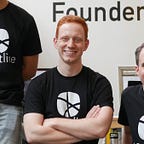Future Seafood: It’s (nearly) All Farmed
Despite living in the shadows of popular culture and being hampered by the negative press during its infancy, the aquaculture industry (more colloquially known as fish farming) of today is a force to be reckoned with. Through a myriad of technological & infrastructural developments, aquaculture has radically improved since the days of experimental chemical tests and controversial environmental impacts. Although there is still work to be done to improve the industry, what started as the peculiar work of hobbyists in the 1960s is now an essential method of food production that provides over 50% of the world’s seafood. And despite the industry’s burgeoning size (current estimates indicate north of $200B worth of seafood will be produced by aquaculture farms this year), it continues to grow and a rapid pace. The entire aquaculture industry is growing 5.3% compounded annually.
Much of this expected growth is predicated on the world’s increasing demand for seafood as well as the economies of scale already achieved by aquaculture farms for specific seafood species. However, the types of fish that can be theoretically farmed are also endless — categories include crustaceans, cephalopods, bivalves, tuna, and groundfish to mention a few. With this opportunity also comes significant engineering challenges. For example, different species require different simulated environments ranging from brackish water, fresh water, high-density/high-pressure marine water to lower density pelagic-level marine water.
The Opportunity in Fish Farming
This steady growth in seafood demand is not expected to decrease anytime soon. As the aquaculture industry matures it will inevitably lower costs on seafood species that traditionally were caught exclusively in the wild. As prices on these seafood items fall with the economies of scale found in aquaculture — the world will likely see seafood become a lower cost protein than most meats. The reason for this is that fish farms yield the same amount of protein with fewer inputs.
Fish are able to convert feed into human food more efficiently (i.e. lower food conversion) because they expend less energy on maintaining bodily processes than terrestrial livestock. [Furthermore,] a high proportion of a fish can be eaten by humans compared to terrestrial livestock, e.g. 68% of an Atlantic salmon can be eaten, compared to only 38% of a lamb.
- Ole Torrissen
Across the globe, 18.7 million people work in aquaculture and the figure is set to increase by 4x in fisheries if post-harvest and secondary employment are factored in. In 2000, aquaculture workers represented only one-quarter of all seafood workers(12.6 million). This data already shows that production per unit of labour is much higher in the aquaculture industry — making it more efficient from a labour perspective.
Why farm fish at all?
The United Nations Food and Agriculture Organization has made it clear that the unsustainable harvest of about one-third of the world’s wild fish reserves has caused irrecoverable damage to some wild fish populations. And with the world’s growing population (and its demand for seafood) it has become clear that wild seafood alone is unable to keep up. In the presence of such ecological risks, aquaculture is proving to be the saving grace that allows the world to continue experiencing seafood for generations to come.
Connect With Freshline
We’re always looking to connect with our customers. To get in touch, please drop us a note at support@freshline.io, or contact us on Instagram, Twitter, Facebook, LinkedIn, or through our website.
